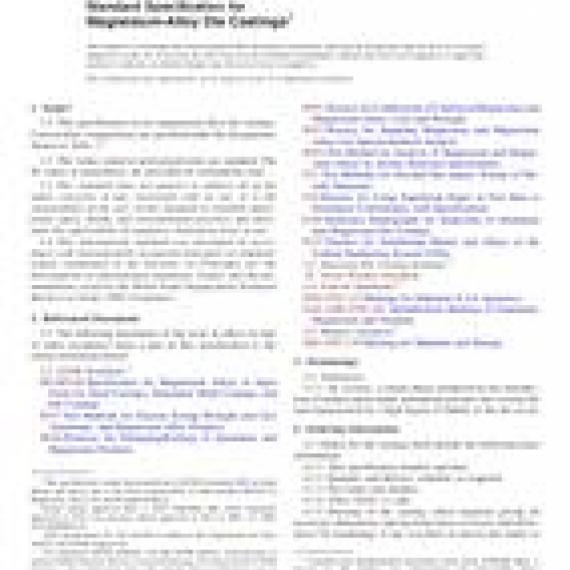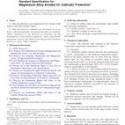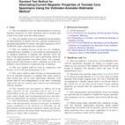No products
ASTM B94-18
ASTM B94-18 Standard Specification for Magnesium-Alloy Die Castings
standard by ASTM International, 05/01/2018
Full Description
1.1This specification covers magnesium-alloy die castings. Current alloy compositions are specified under the designations shown in Table 1.2
(A)Analysis shall regularly be made only for the elements specifically mentioned in this table. If, however, the presence of other elements is suspected or indicated in the course of routine analysis, further analysis shall be made to determine that these other elements are not in excess of 0.3 %.(B)The following applies to all specified limits in this table: For purposes of acceptance and rejection an observed value or a calculated value obtained from analysis should be rounded to the nearest unit in the last right-hand place of figures used in expressing the specified limit in accordance with the rounding procedure prescribed in Section 3 of Practice E29.(C)Where single units are shown, these indicate the maximum amounts permitted.(D)ASTM alloy designations were established in accordance with Practice B951, UNS designations were established in accordance with Practice E527.(E)In alloys AS41B, AM50A, AJ52A, AM60B, AJ62A, and AZ91D, if either the minimum manganese limit or the maximum iron limit is not met, then the iron/manganese ratio shall not exceed 0.010, 0.015, 0.015, 0.021, 0.021, and 0.032, respectively.(F)Alloys AJ52A, AJ62A, and AS21B are patented compositions for elevated temperature applications. Interested parties are invited to submit information regarding the identification of alternatives to these compositions to ASTM International. Your comments will receive careful consideration at a meeting of the responsible technical committee, which you may attend. ASTM International takes no position respecting the validity of any patent rights asserted in connection with any item mentioned in this standard. Users of this standard are expressly advised that determination of the validity of any such patent rights, and the risk of infringement of such rights, are entirely their own responsibility.1.2The values stated in inch-pound units are standard. The SI values in parentheses are provided for information only.
1.3This standard does not purport to address all of the safety concerns, if any, associated with its use. It is the responsibility of the user of this standard to establish appropriate safety, health, and environmental practices and determine the applicability of regulatory limitations prior to use.
1.4This international standard was developed in accordance with internationally recognized principles on standardization established in the Decision on Principles for the Development of International Standards, Guides and Recommendations issued by the World Trade Organization Technical Barriers to Trade (TBT) Committee.


































